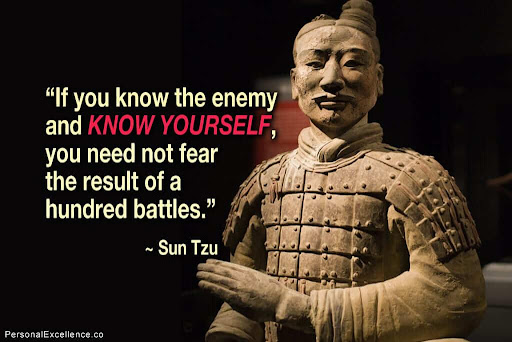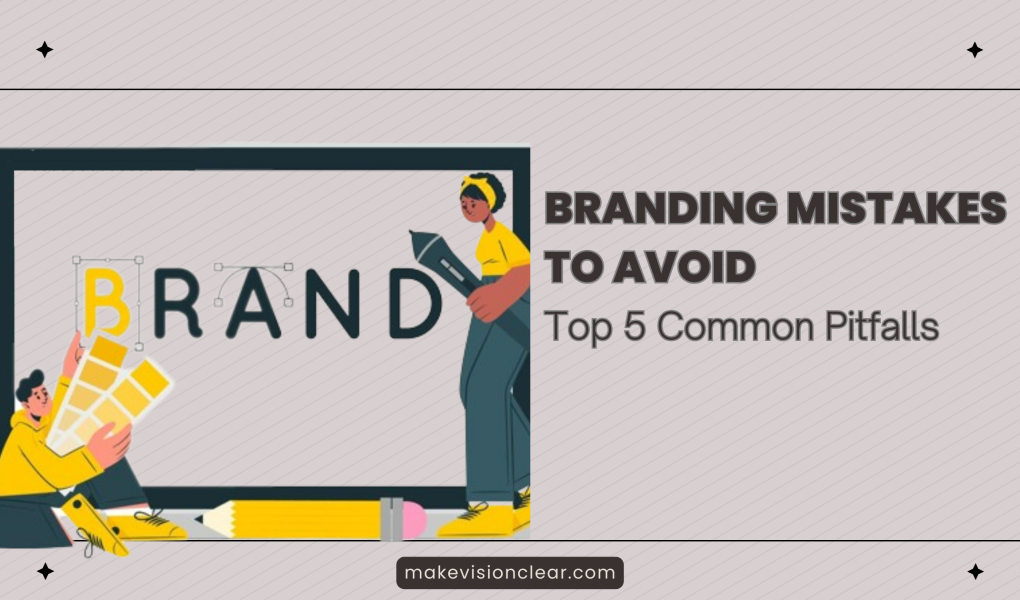In Kung Fu Panda, Master Oogway tells Shifu that Po can become a dragon warrior if he guides him, nurtures him, and believes in him.
Similarly, if you want to build a successful brand, you will need to nurture it continuously, guide it dedicatedly, and believe in its purpose. It’s like watering a plant daily to make it grow into a beautiful tree.
All of this takes time and patience, and a lot of things can go wrong, which can cause your brand to fade into oblivion.
So, in this post, I will highlight five crucial pitfalls that you should be careful of when you build your brand from scratch.
This will help your product not only survive but also thrive in today’s competitive market.
Table of Contents
Pitfall 1: Not Understanding Your Competition
Sun Tzu, a Chinese military general, philosopher, writer, and strategist, once said,
If you know the enemy and know yourself, you need not fear the result of hundreds of battles.

This statement equally applies to branding nowadays.
If you want your product to succeed in today’s cutthroat market, if you want to outsmart all your competitors, then pay attention to your rivals and observe what they are doing presently. This involves identifying their strengths and weaknesses, how their products fare in the market, what makes them good, and the areas where they are currently lacking.
Not only that, find out what audience they are targeting and which social platforms they use to promote their products and services.
Once that is done, compare your products and services to it and observe where you stand in front of them. This will help you stay one step ahead of your competitors.
See also: Google Business Profile (GBP) Optimization: The Ultimate Guide
Pitfall 2: Lack of Compelling Story
Since ancient times, humans have been drawn towards storytelling to make sense of this world and their existence in it.
Nowadays, in the age of social media marketing, brands have been relying on storytelling to show people who they are, what they do, what they stand for, and how they help their customers.
If you want to forge an emotional connection with your target audience, then you need a powerful story that people can relate to when they see it.
Take, for example, Fevikwik. Through 40 seconds of storytelling, they showed how a villager was able to pull fish out of a lake with just a few drops of Fevikwik on a stick.

This dumbstruck another man who was trying to catch fish for hours with the help of professional tools but failed in it. Through this ad, Fevikwik conveyed to its audience that their glue sticks are water resistant and strong without uttering a word.
Genius storytelling, isn’t it?
So, if you want more people to know about your brand and engage with it, then come up with a compelling story regarding why your product exists and why people should interact with it.
Use social media posts, images, or videos to convey your story.
See also: What is Hyperlocal Marketing and Why is it Important?
Pitfall 3: You Overpromise and Underdeliver
What happens when companies launch a product that over promises and then under delivers? It gets trashed by its customers.
Take, for example, Warcraft 3 Reforged, which is a remastered version of a critically acclaimed game, Warcraft 3, that was released in 2002. Back then, the game had sold one million copies, becoming the third best-selling game of 2002.

Blizzard Entertainment, the company that developed the game, decided to remaster the game as it had gotten old and release it once again for the modern audience.
During the development of this remaster, the developers had made a promise to implement all the features that the original game had, like the clan system, player profiles, ranking ladders, automatic tournaments, 3D animated campaign backgrounds, and 3D animated portraits, communal chat listing, and custom campaigns.
However, once the game launched, none of the features were there in the game. The company had also falsely promised to add new campaigns, cutscenes, and interface, rework the story elements, and add new custom game lobbies, but none of them were fulfilled and were basically false advertisements.
End result? Both the game and Blizzard Entertainment received a massive backlash from their target audience. The game’s Metacritic score stood at 2.8, which was the lowest in the history of any video game.
The company apologized for the botched development and release of the game and promised to bring improvements to it.
But what’s the point when the milk has already been spilled?
So, the lesson here is that you fulfill whatever promises you make to your customers when developing a product; otherwise, your brand will take a serious hit.
Also, yes, don’t falsely advertise.
See also: How to Build a Marketing Funnel That Converts Visitors Into Customers Like Crazy
Pitfall 4: You Don’t Know Your Target Audience
It’s essential to know your target audience in order to build a product that aligns with their interests. Otherwise, you will end up making the same mistake that Blizzard Entertainment did with their game announcement.
Seriously, when it comes to blunders, Blizzard Entertainment is a company that keeps on giving. The backlash they received from the Diablo Immortal Blizzcon announcement showed what happens when brands don’t know their target audience.
Diablo is a very popular franchise that has sold nearly 100 million copies worldwide by 2020.
Many years had passed since Diablo 3 was released in 2012, and fans were clamoring for the next iteration of this franchise.
The 2018 Blizzcon was rife with rumors that the company will announce the next Diablo in its annual gaming convention.
But, oh boy, everyone was in for a shock.
The company announced Diablo Immortal for mobile platforms in front of an audience that primarily plays video games on PCs and consoles.
This raises a question
Why would an audience that plays games on their PC or Console would care about a mobile game? Especially when they were anticipating a PC and Console release.
You can guess what happened next. It was a bloodbath.

The audience collectively booed at the announcement.
The developers of this game fumbled and committed more blunders by taunting their audience *Don’t you guys have phones* which has become a meme now.
The situation further worsened when it was revealed that the game is primarily meant for mobile and won’t be released on PC and Consoles. (The stance has changed now due to backlash, and there is an open beta of this game currently available for the PC platform.)
But you got my point? They introduced the wrong product in front of their audience and got humiliated due to it since they didn’t understand them properly.
So, what’s the moral of the story?
Get to know your target audience inside-out.
See also: Affiliate Marketing Boosts Your Business to Become a Brand
Pitfall 5: Poor Customer Service
A study revealed that 67 percent of respondents admitted to switching brands after a bad customer experience. Out of these, 13 percent told at least 15 other people about their experience.
Brands often take customer service for granted.
Here is an example:
Recently, I found out that the CEO of an e-commerce platform called Dukaan fired 90% of its support staff, bragging that the AI chatbot outperforms them. In a jubilant manner, this is what he said on Twitter:
The time to the first response went from 1 m 44s to INSTANT!
Resolution time went from 2h 13m to 3m 12s
Customer support costs were reduced by ~85%
Any brand that thinks that customer service is all about quickly resolving issues deserves to fail! It’s much more than that.
Providing better customer service isn’t just resolving issues but also includes building genuine connections with customers. That requires active listening, showing empathy, and being curious.
And yes, all of this is as important as solving a customer’s problems because most of them leave due to a lack of empathy from the customer representative since they are more focused on quickly solving the problem rather than listening to the entire story.
AI chatbots will never replace the need for a human touch in customer service.
That’s It Folks!
Keep these five pitfalls in mind when you go about building your brand. Remember, it’s a continuous journey and not a destination.
Also, if you are looking for branding services to build your brand, then check out the best branding agencies listed by GoodFirms. These companies have a proven track record in formulating marketing strategies that will help you connect with vast swaths of people globally.



